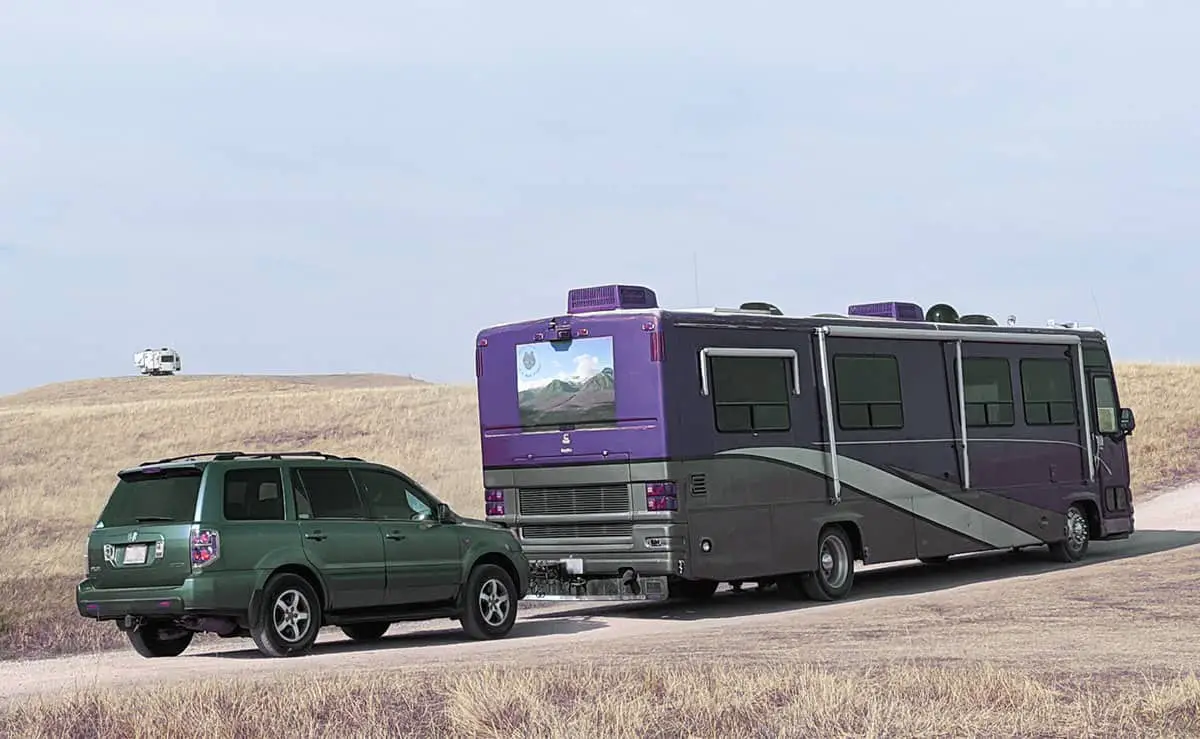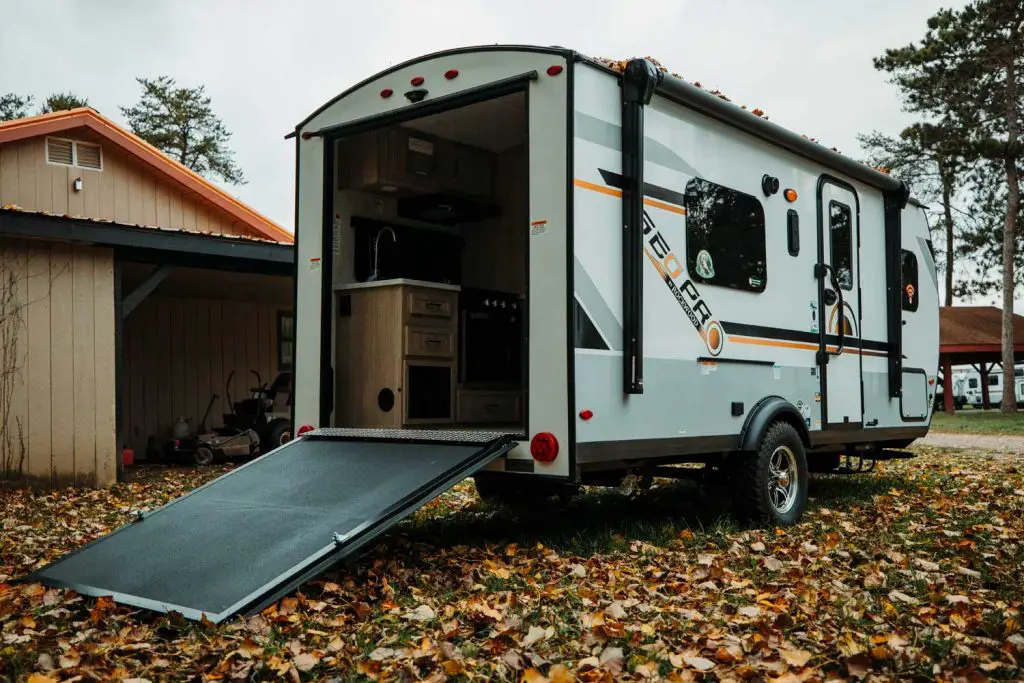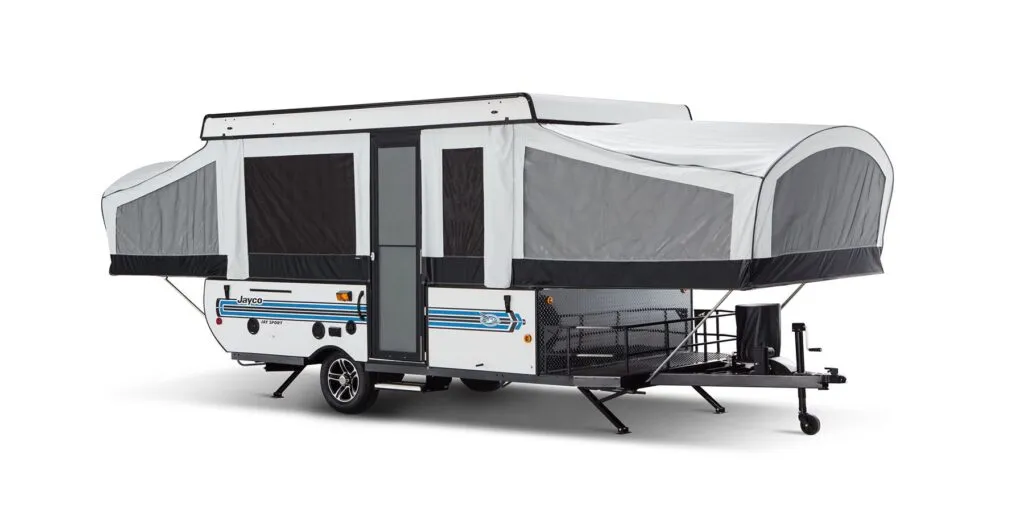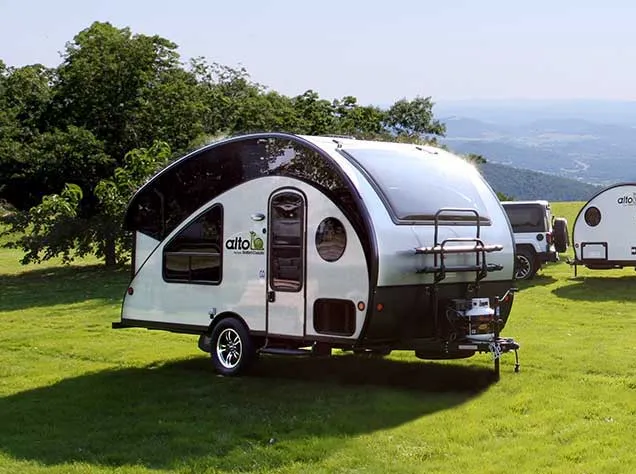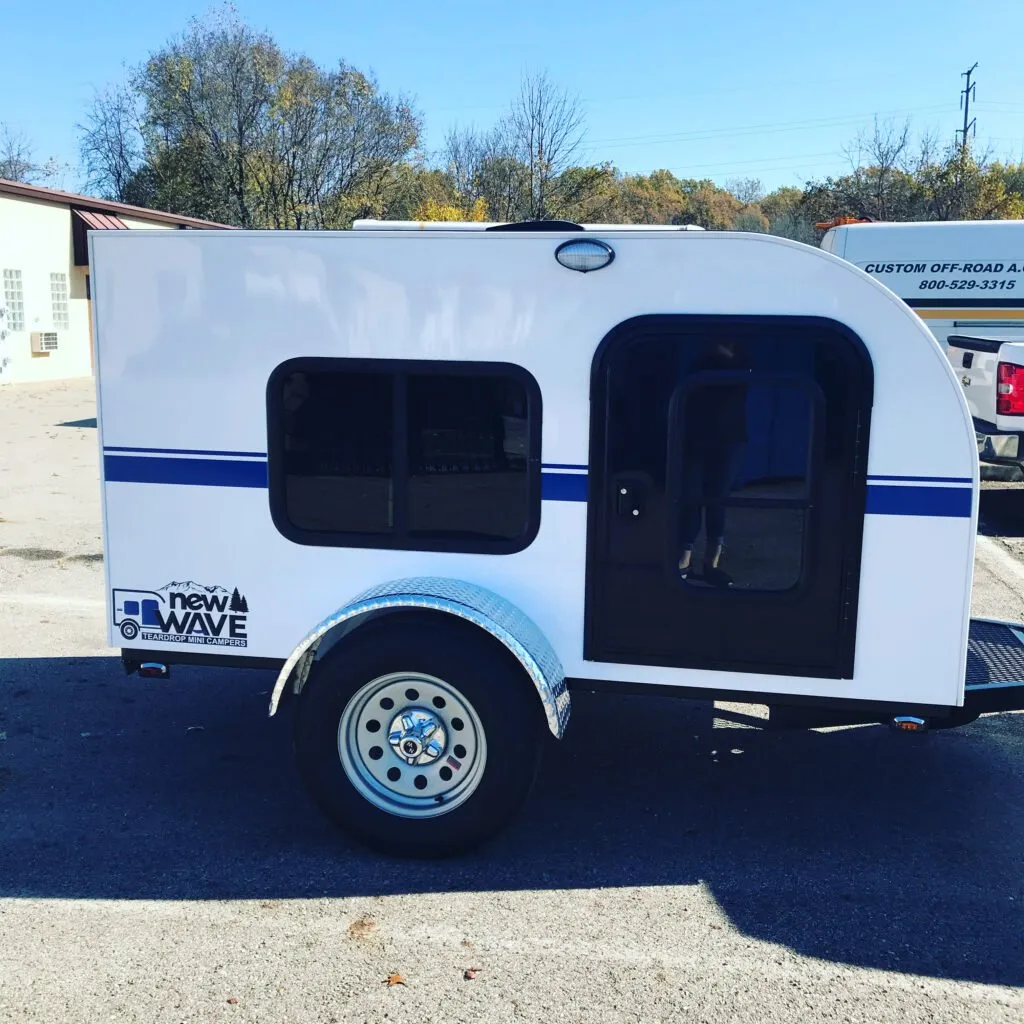Last Updated on July 5, 2023
As a motorhome owner, travel options are virtually limitless. That’s the beauty of the mobile lifestyle. Each year Motorhome Magazine releases a comprehensive guide for dinghy towing. It is important to know the proper ways to tow a vehicle as well as tips for setup and additional equipment that you need.
But even though your home-on-wheels can transport you to many favorite places with ease, there are limitations. This is when it comes in handy to have another vehicle with you. Towing a dinghy vehicle behind your motorhome is something every RVer should do. It is easy to equip a dinghy vehicle and motorhome.
There is specific equipment that you will need for dinghy towing.
- Tow bar (or tow dolly)
- Baseplate
- RV hitch and drop/rise adapter
- Dinghy towing harness
- Brake system
- Tabs and safety cables
Dinghy towing is the act of towing a car behind a motorhome or RV. The car, called the dinghy, is connected to the RV with a hitch, wiring, and other components. It is pulled by the RV just as a trailer would be pulled. You can also tow other vehicles such as SUVs, pickup trucks, and 4x4s. When it comes to towing a vehicle behind a motorhome or RV, there are options.
Dinghy towing is the umbrella term for towing a vehicle behind an RV. Flat towing is more specific. The difference comes down to the motorhome towing equipment. Dinghy towing can be done using a tow bar or tow dolly. With a tow bar, all four of the vehicle’s wheels will be on the ground and this is flat towing. With a tow dolly, the front wheels will be lifted from the road. Flat towing with a tow bar is often easier and requires less equipment.
[amazon bestseller =”car towing accessories” items=”3″]
Tips for Flat Towing
Choose a tow bar: A tow bar will provide a secure connection between your dinghy vehicle and RV. It consists of two arms that attach to the dinghy. These arms pivot side to side for smooth towing and turning. There are tow bars available in different styles, weight capacities, and ease of use. Some tow bars will hitch up to the RV using a standard receiver shank whereas others will use a coupler to drop onto a trailer ball. You can also use a tow dolly if you prefer.
Select a tow bar base plate: Choose a base plate that corresponds to your specific tow bar and vehicle. Some tow bars attach to the vehicle with universal, bolt-on brackets, but the preferred method is a custom base plate. A base plate is simply a metal frame that bolts onto the front end of your vehicle. It has two receivers to accept attachment tabs for hooking up the tow bar arms. You can choose the correct base plate by looking up your vehicle by its year, make, and model. You do not need a base plate if you are using a tow dolly.
Select an RV hitch & adapter: Before dinghy towing a vehicle, you will need to install a receiver hitch on the back of your RV. Towing systems for motorhomes are very similar to car towing systems. Both use a rear-mounted receiver tube. RV hitches are available in a frame-mounted style or bumper-mounted style. When flat towing a vehicle, the receiver hitch height must be within 3 inches of the tow bar base plate height. If the height difference is greater than 3 inches, a hitch adapter will be needed to drop to the correct height.
Select a dinghy towing harness: To properly dinghy tow a vehicle, it needs to be connected to the RV. This means not just using a hitch connection but you need an electrical connection as well. The towed vehicle lights have to be synchronized with the RV lights for safe driving. This is done using a dinghy tow wiring harness. You can also use RV towing lights. It is essential that the brake and taillights on the dinghy work in concert with those on the motorhome. You can even look for options that help keep the dinghy’s battery charged while en route.
Invest in a braking system: When flat towing a vehicle, an auxiliary braking system is recommended. Many tow dollies come with built-in brakes, but with flat towing, an onboard vehicle braking system is needed. An RV’s brakes can be overloaded by the weight of the dinghy vehicle so having auxiliary brakes helps the RV and vehicle stop smoothly and safely. Today’s motorhomes can accommodate a lot of dinghy weight. While many new chassis have tow ratings of at least 4,000 pounds, there are certain luxury coaches that have a gross combined weight rating (GCWR) of 60,000 pounds or more.
Add tow bar accessories: To finalize your dinghy towing connection, you might need additional towing equipment. Some of these accessories are included with tow bars, so check your equipment to verify if these are needed and included.
Attachment tabs to attach the tow bar arms to the dinghy vehicle
Safety cables are similar to safety chains and connect from the base plate to the RV trailer hitch loops
Tow bar locks to replace the hitch pins for increased security of the towing setup.
While some vehicles are easy to tow, others require more detailed procedures. Some of them require running the engine every few hours. Some require you to disconnect the battery. Some vehicles are only towable if you have manual transmission. Some require a specific way to set the transmission. The easiest vehicle to tow is generally the Jeep. You should always check the owner’s manual of the specific vehicle for these procedures. Once you’ve confirmed that a particular vehicle is dinghy-towable, then you create the dinghy-to-motorhome connection. Using this guide to create the right connection, you can take your vehicle anywhere. The next step is an adventure.


